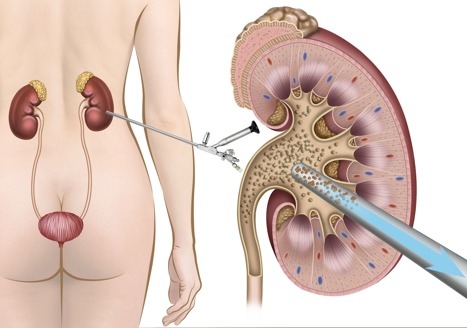What is PCNL Surgery? Expertise of Dr. Yasir Iqbal
Percutaneous Nephrolithotomy (PCNL) is a minimally invasive surgical procedure used to remove large or complex kidney stones that cannot be treated effectively with other less invasive methods. It is especially recommended for stones larger than 2 centimeters or for multiple stones located within the kidney.


How is PCNL Performed?
The procedure is done under general anaesthesia.
A small incision (about 1 cm) is made in the patient's back to create a direct channel into the kidney.
Using specialized instruments, including a thin tube called a nephroscope, the surgeon locates and breaks the stones into smaller pieces.
The fragments are then removed through the small incision.
Sometimes, a stent or tube may be placed temporarily to help urine drain and assist with healing.
Advantages of PCNL
Highly effective for large or complicated kidney stones.
Minimally invasive compared to open surgery.
Shorter recovery time and less postoperative pain.
Can remove stones in a single session that might require multiple treatments otherwise.
When is PCNL Recommended?
For large kidney stones (typically over 2 cm).
When stones cause obstruction, infection, or severe pain.
If other treatments such as shockwave lithotripsy or ureteroscopy are not suitable or have failed.
For complex or multiple stones located in difficult-to-reach areas of the kidney.
Preparation for PCNL Surgery
Before surgery, your doctor will provide instructions, including:
Medication review: Certain medications like blood thinners may need to be stopped before surgery.
Fasting: Avoid food and drinks for at least 6-8 hours before the procedure.
Preoperative tests: Blood tests, urine tests, imaging scans (CT or ultrasound) will be done.
Discuss allergies and medical conditions: Inform your doctor about any allergies or existing health issues.
Recovery After PCNL
Most patients stay in the hospital for 1 to 3 days after the surgery.
Mild discomfort or soreness near the incision is common initially.
Patients are encouraged to drink plenty of fluids to flush out any remaining stone fragments.
Follow-up imaging may be done to confirm that all stones have been cleared.
A nephrostomy tube (a drainage tube coming from your back) may be left in place temporarily to help the kidney drain urine and promote healing.
It is usually removed before you’re discharged or within a few days afterward.
Mild back or flank discomfort is normal and can be managed with prescribed pain medications.
Any severe or persistent pain should be reported to your doctor.
Patient Feedback
Read what our satisfied patients say about Dr. Yasir Iqbal Lone.
Dr. Lone provided exceptional care during my surgery. Highly recommend his services!
John Smith
New Delhi
I am thoroughly impressed with Dr. Lone's expertise and caring nature. His staff is friendly, and I felt well taken care of throughout my treatment journey.
Emily Clark
Delhi NCR
